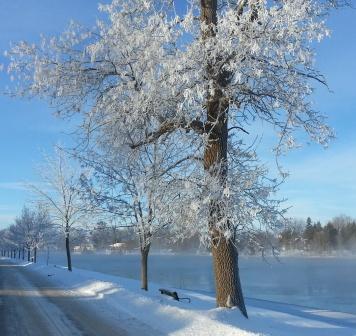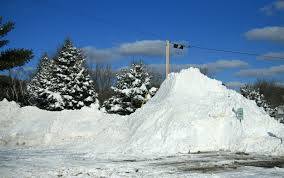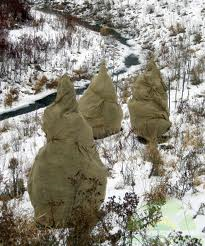Winter Tree Care Tips

It looks like we are in for a good ol’ Canadian winter! As we hunker down in our warm, cozy homes for the season there are a few things to keep in mind to ensure our trees are healthy and safe come spring time!
 Create a Snow Management Plan
Create a Snow Management Plan
Sometimes there’s so much snow that we don’t know where to put it! Wherever you choose to pile it be sure to keep it away from your trees. If you have your driveway plowed ensure that the contractor keeps a good distance from your trees to reduce the potential for contact which could cause wounds and subsequent access for pests and disease. Also, the pressure of a plow pushing snow against your trees can also have negative impacts on its bark and roots. Try to flag off an area where you would like the snow to be piled.
Keep Salt Away from your Tree’s Roots
The salt used on roads and driveways in the winter is great for reducing slips and slides but it can have a negative impact on our trees. When the snow melts and the salt soaks into the ground it can damage the roots and ultimately the health of your tree. If you follow the last tip and keep piles of snow away from the dripline of your trees (the extent of the tree’s canopy) you will be in good shape. If you are unable to do this, a thorough watering in the spring to leach the salts from the soil may help.
Keep Heavy Snow off your Tree Branches
When there has been a heavy snow and you notice your tree`s branches hanging low with the weight, it is a good idea to gently knock the snow off where possible. Using a broom, rake or shovel (and not standing directly underneath) gently knock the branches that are within reach. However, if there has been an ice storm and your branches are covered with ice, do not try to shake them since the branches could break and cause more harm than good.
Protect New or Exposed Trees
Newly planted trees have gone through considerable stress so it may be necessary to provide some additional protection for their first couple of winters. This rule applies more to coniferous trees (trees that have needles) but can apply to deciduous trees (those that loose leaves in winter) if they are exposed to strong winds in the winter. Wrapping conifers in burlap, or creating a burlap fence, can help to protect your trees and give them the greatest chance for survival.
Winter is a Great Time for Tree Work!
Homeowners often forget about their trees once the leaves fall and the snow piles up, however, winter is a great time to have an arborist visit your property. With your grass and gardens dormant, winter tree work is less invasive and can cause less disturbance. Tree removals are especially great to do in winter since there is less green material to manage. Cabling, bracing and deadwood pruning can also be completed in winter when the leaves aren’t present. Unlike the trees, Arborists don’t go dormant in the winter so it’s a great time of year to have them out to assess your tree when they can see the entire trunk and branch structure.
Winter is a harsh season and unfortunately your trees cannot escape it. Give them the attention they need to make it to spring healthy and safe. Are you unsure about the health or safety of your tree? Have one of our Certified Arborists/Tree Risk Assessors out to take a look and put your mind at ease.

